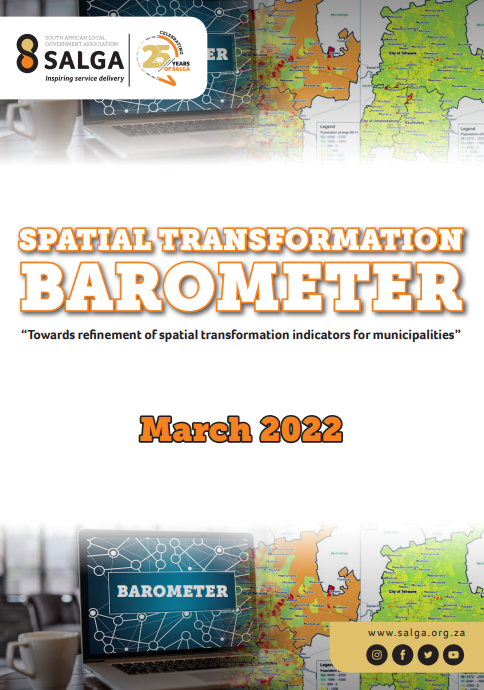SALGA Spatial Transformation Barometer
Towards refinement of spatial transformation indicators for municipalities

This SALGA publication discusses the challenges of spatial inequality in South Africa, its causes, and its effects on poor communities. Chapter 8 of the SA National Development Plan, which calls for the transformation of South Africa's human settlements and national spatial economy to address poverty and inequality, is highlighted, and SALGA's role in monitoring municipal interventions towards spatial transformation is discussed.
SALGA has committed to producing an annual publication on municipal spatial transformation using its Spatial Transformation Barometer tool. The discussion document aims to stimulate dialogue on how to measure spatial inequality and transformation, including what information is available for this purpose.
The critical outcomes of spatial transformation are highlighted, which include providing proximity to employment and economic opportunities, reducing travel distance and cost, and ensuring inclusivity in city and town integration. The document identifies various approaches to spatial transformation in South Africa and highlights the key policy and legislative initiatives that have been taken, including the Spatial Planning and Land Use Management Act (SPLUMA) of 2013, the Integrated Urban Development Framework (IUDF) developed in 2016, and the National Spatial Development Framework (NSDF) developed by the Department of Agriculture, Land Reform, and Rural Development.

Comments